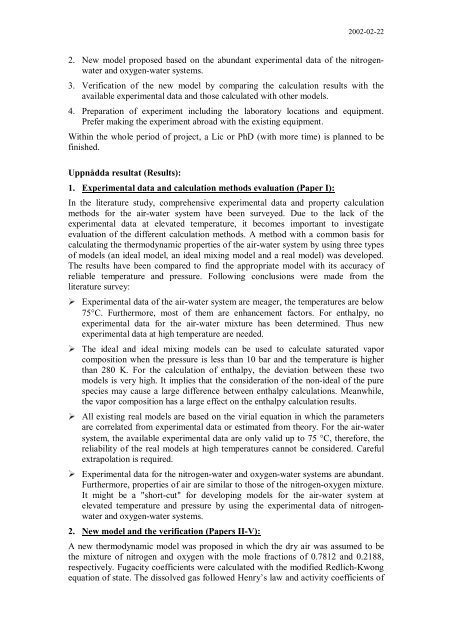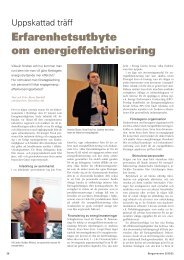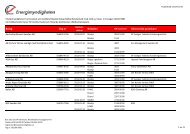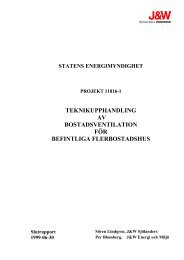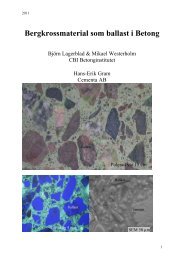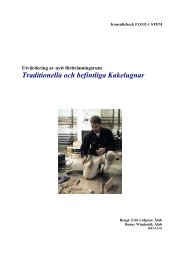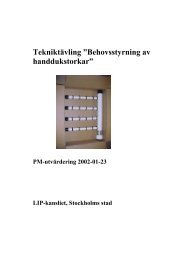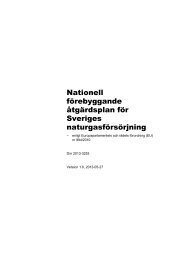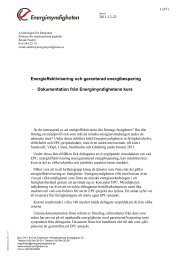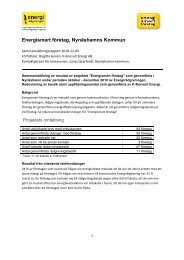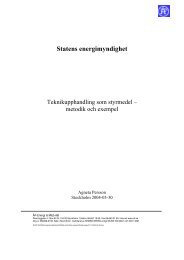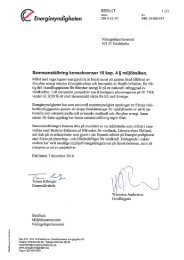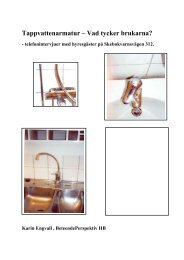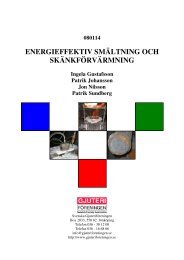ATAC i system - Energimyndigheten
ATAC i system - Energimyndigheten
ATAC i system - Energimyndigheten
You also want an ePaper? Increase the reach of your titles
YUMPU automatically turns print PDFs into web optimized ePapers that Google loves.
2002-02-22<br />
2. New model proposed based on the abundant experimental data of the nitrogenwater<br />
and oxygen-water <strong>system</strong>s.<br />
3. Verification of the new model by comparing the calculation results with the<br />
available experimental data and those calculated with other models.<br />
4. Preparation of experiment including the laboratory locations and equipment.<br />
Prefer making the experiment abroad with the existing equipment.<br />
Within the whole period of project, a Lic or PhD (with more time) is planned to be<br />
finished.<br />
Uppnådda resultat (Results):<br />
1. Experimental data and calculation methods evaluation (Paper I):<br />
In the literature study, comprehensive experimental data and property calculation<br />
methods for the air-water <strong>system</strong> have been surveyed. Due to the lack of the<br />
experimental data at elevated temperature, it becomes important to investigate<br />
evaluation of the different calculation methods. A method with a common basis for<br />
calculating the thermodynamic properties of the air-water <strong>system</strong> by using three types<br />
of models (an ideal model, an ideal mixing model and a real model) was developed.<br />
The results have been compared to find the appropriate model with its accuracy of<br />
reliable temperature and pressure. Following conclusions were made from the<br />
literature survey:<br />
Experimental data of the air-water <strong>system</strong> are meager, the temperatures are below<br />
<br />
75°C. Furthermore, most of them are enhancement factors. For enthalpy, no<br />
experimental data for the air-water mixture has been determined. Thus new<br />
experimental data at high temperature are needed.<br />
The ideal and ideal mixing models can be used to calculate saturated vapor<br />
<br />
composition when the pressure is less than 10 bar and the temperature is higher<br />
than 280 K. For the calculation of enthalpy, the deviation between these two<br />
models is very high. It implies that the consideration of the non-ideal of the pure<br />
species may cause a large difference between enthalpy calculations. Meanwhile,<br />
the vapor composition has a large effect on the enthalpy calculation results.<br />
All existing real models are based on the virial equation in which the parameters<br />
<br />
are correlated from experimental data or estimated from theory. For the air-water<br />
<strong>system</strong>, the available experimental data are only valid up to 75 °C, therefore, the<br />
reliability of the real models at high temperatures cannot be considered. Careful<br />
extrapolation is required.<br />
Experimental data for the nitrogen-water and oxygen-water <strong>system</strong>s are abundant.<br />
<br />
Furthermore, properties of air are similar to those of the nitrogen-oxygen mixture.<br />
It might be a "short-cut" for developing models for the air-water <strong>system</strong> at<br />
elevated temperature and pressure by using the experimental data of nitrogenwater<br />
and oxygen-water <strong>system</strong>s.<br />
2. New model and the verification (Papers II-V):<br />
A new thermodynamic model was proposed in which the dry air was assumed to be<br />
the mixture of nitrogen and oxygen with the mole fractions of 0.7812 and 0.2188,<br />
respectively. Fugacity coefficients were calculated with the modified Redlich-Kwong<br />
equation of state. The dissolved gas followed Henry’s law and activity coefficients of


